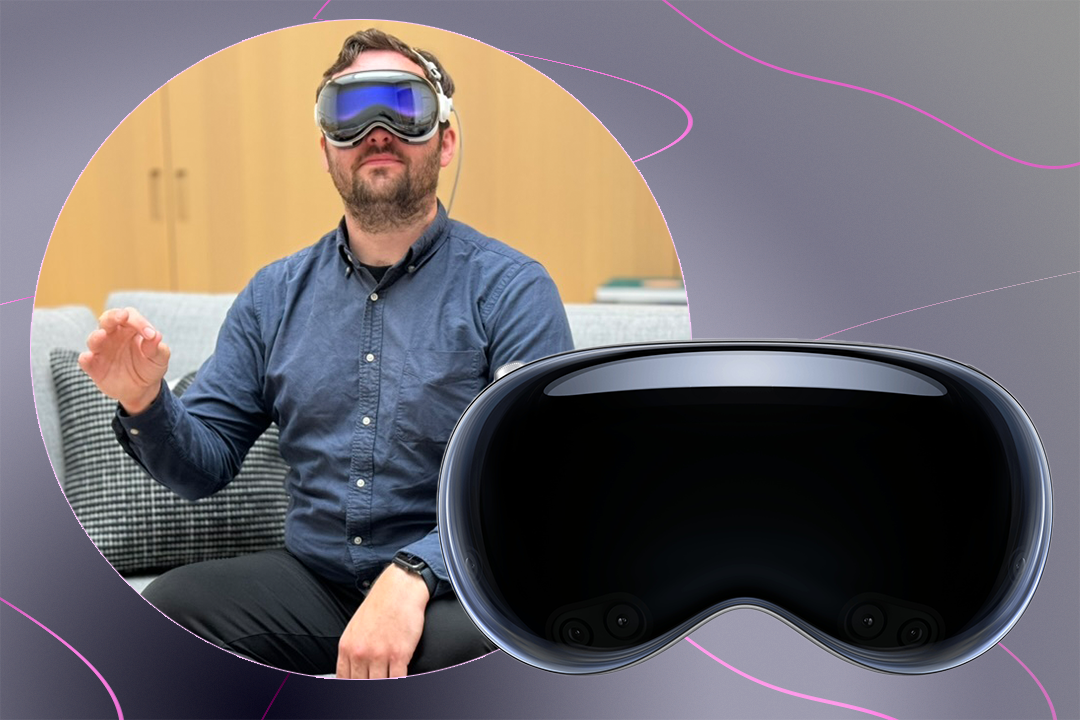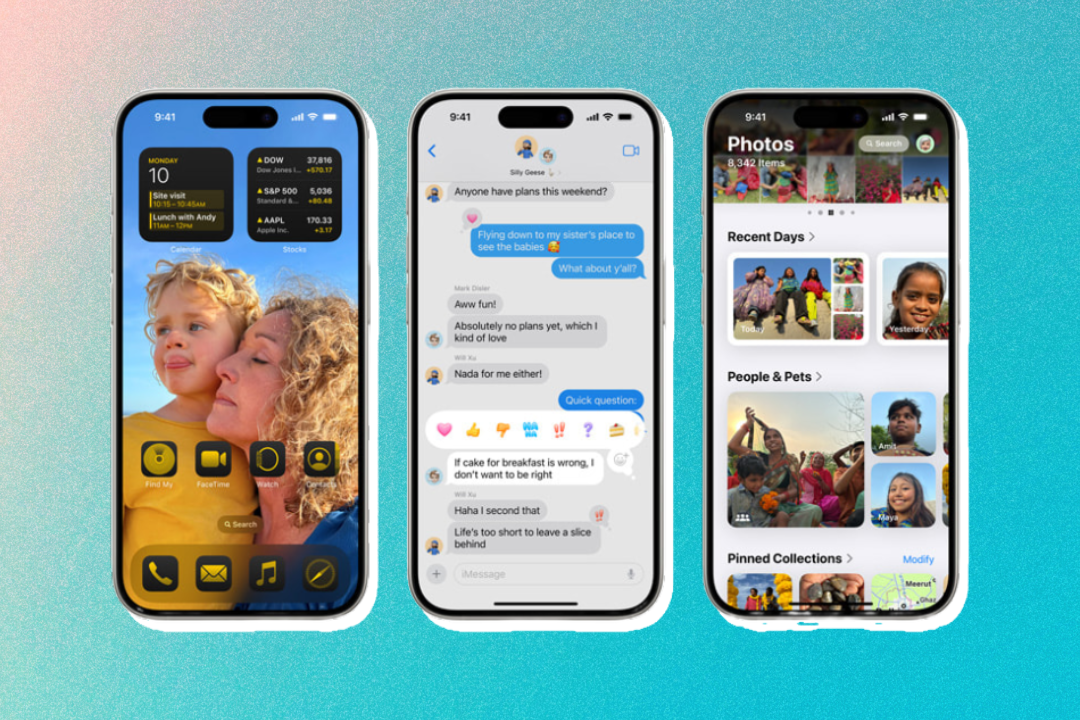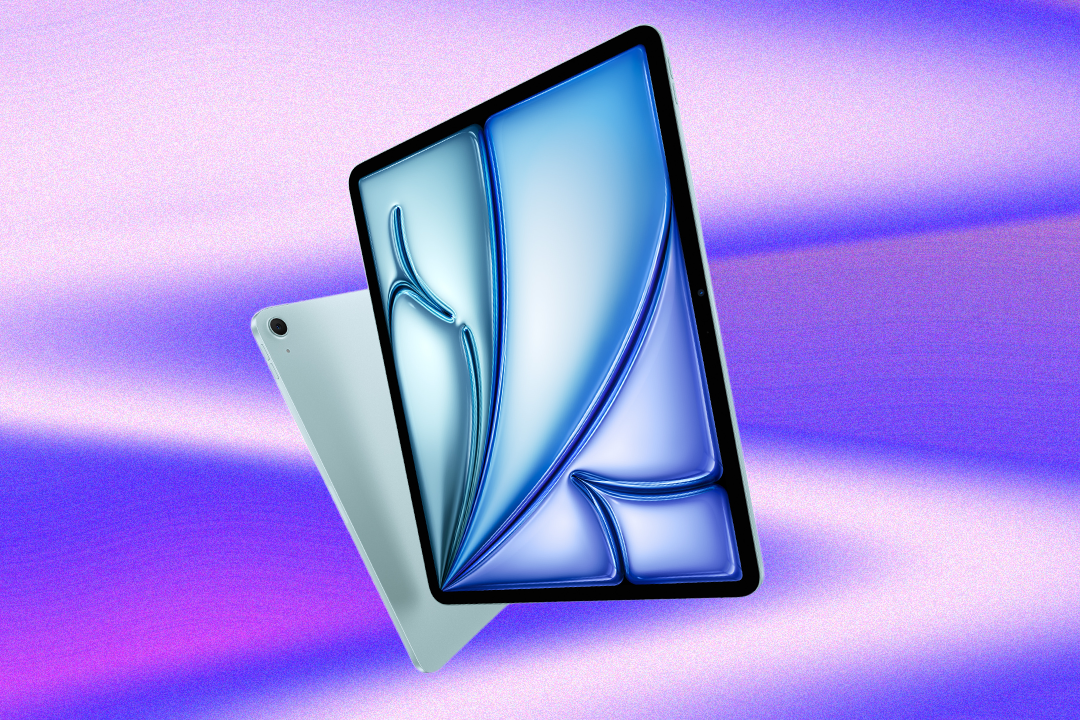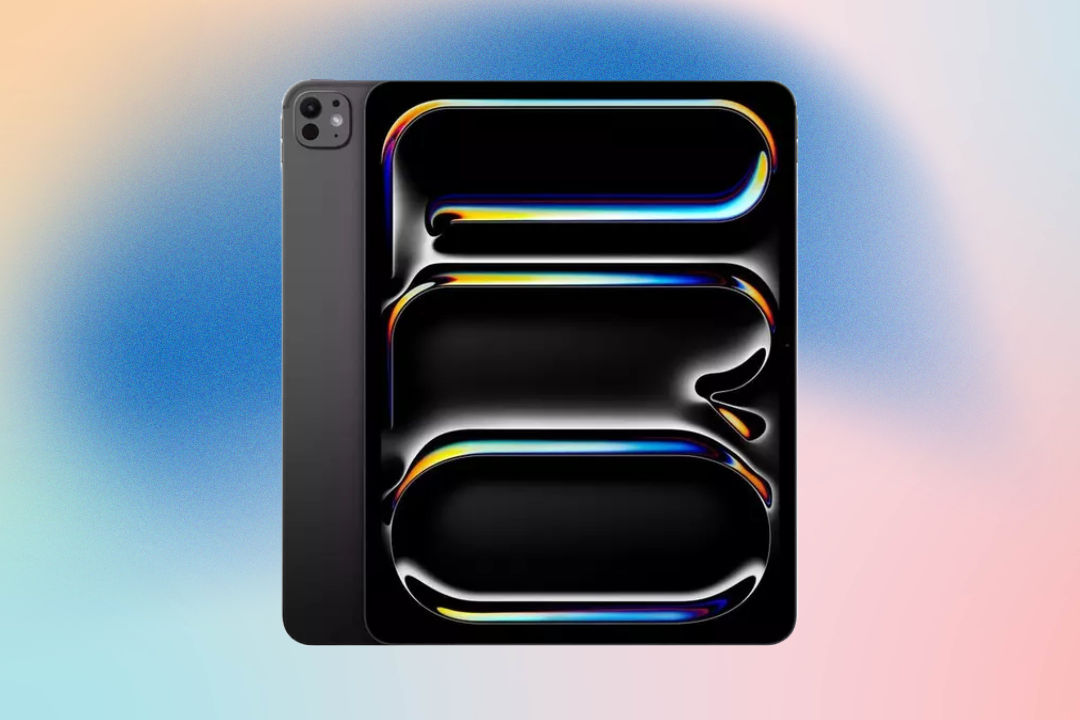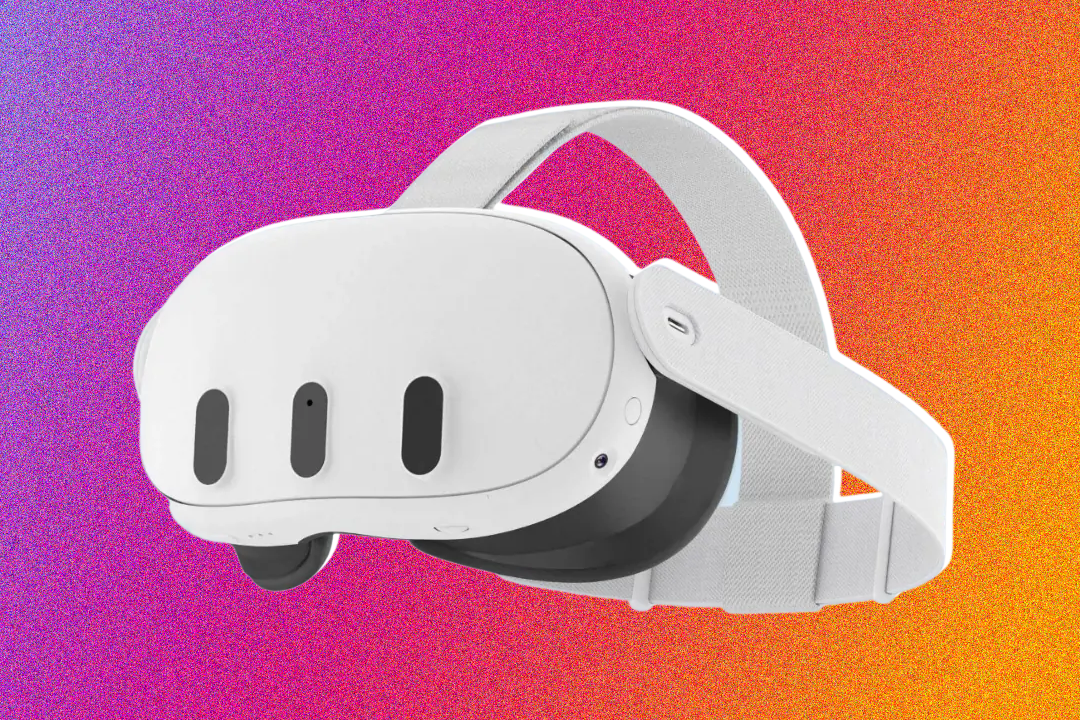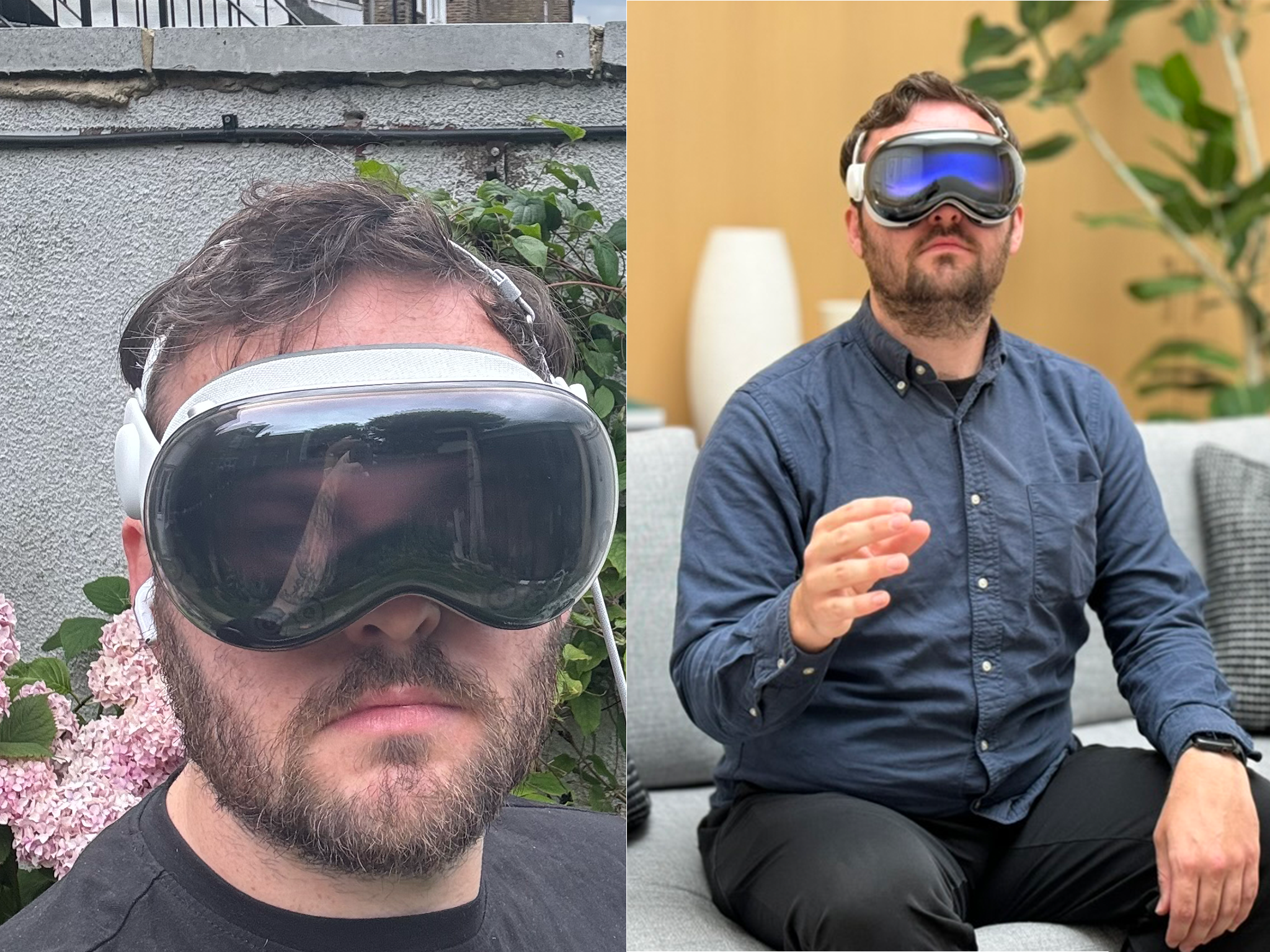Apple Vision Pro
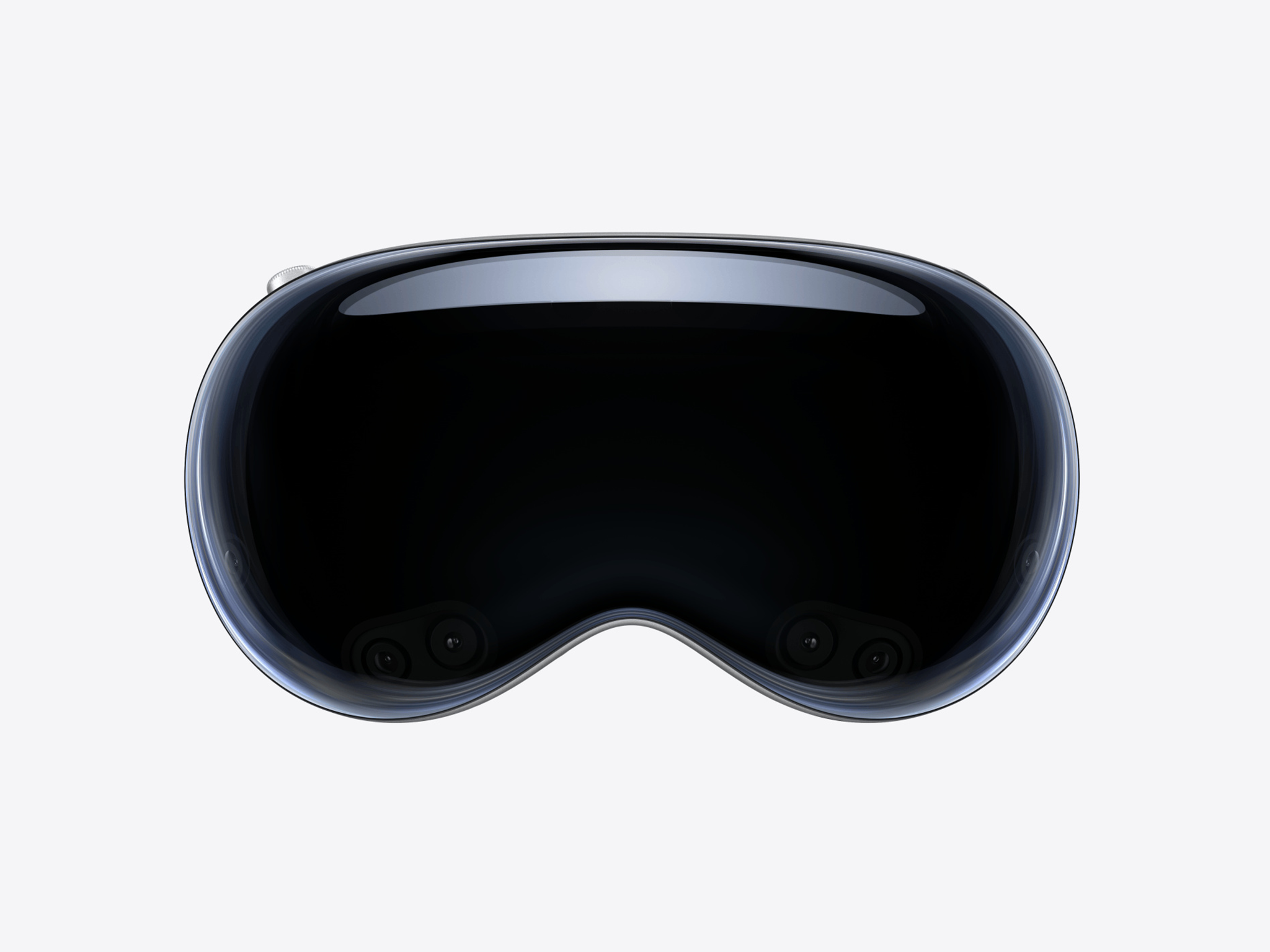
- Capacity: 256GB-1TB
- Battery: Two hours of general use (but can be used while charging)
- Weight: 625 grams
- Screens: 23 million pixels, 3D display
- Processor : Apple M2 chip for computing, plus R1 for real-time sensors
- Sensors: Two main cameras, six cameras to track world, four to track your eyes, and more
- Security: Optic ID that scans your eyes
- Why we love it
- A glimpse at the future of computing
- The cinema of your dreams
- Work and app wonderland
- Take note
- Very expensive
The first thing you’ll notice about the Vision Pro when it arrives is that its box is huge; it has roughly the same footprint as a MacBook box but it’s as tall as four or five of them stacked up. The Vision Pro itself isn’t huge, but it comes with a whole host of additional pieces, including the straps and light seals that are specifically sized to your head by scanning it with an iPhone during the purchase process.
You grab all of those things out of the box and attach them together, and then place the Vision Pro onto your head. From there, it takes you through a setup process that ensures it fits correctly and can track your eyes, all of which is straightforward and even a little fun.
Once you’re unpacked and set up, here’s what you’ll see when you turn on the Vision Pro and put it on your head: nothing. Or, rather, everything that was around you when you put it on. It uses its cameras to show you your surroundings – mostly faithfully recreated, though with a light haze, as if you’re looking through a very thin blind. You can dial in environments – sweeping 3D vistas that you switch on by twisting the digital crown on top of the headset – and they are immersive and useful for blocking out a messy desk, for instance, but I found myself switching back to the real world more often than not. And, of course, the point of it is to place apps and experiences on top of the real world – think of it as an infinite set of resizable iPads that you can place around your space – but they stay anchored and reflect light like any other addition to your surroundings.
Even for those people who are outside the headset, the Vision Pro attempts not to get in the way. It does that through the use of a whole extra display on the outside – known as EyeSight – which shows a virtual version of your eyes when you can see the world, so that people know you can see them and make eye contact with you. Once again, the aim of the Vision Pro is to blend with the real world as much as possible.
This is entirely by design. The Vision Pro might often have been described as a virtual reality headset, and it’s not an entirely incorrect thing to call it, but it’s also not really that at all. Apple’s focus is on ensuring that this new era of spatial computing sits alongside the real world, rather than serving as an alternative to it.
Read more: Apple iPad Pro 2024 review
That is a philosophical difference that infuses absolutely everything about the Vision Pro. And it is one that Apple was absolutely right to make: it means that the headset is genuinely useful, as well as exciting and thrilling.
The Vision Pro is an astonishing success. Not an unqualified one: it is still early, and that shows at various points during use. But Apple’s job was to turn spatial computing – or augmented reality, or whatever you want to call it – into a new and practical platform. It has achieved that, and so much else besides.
Hardware
The outside of the Vision Pro looks a little like many of Apple’s products combined, which perhaps makes sense given that the company hopes that’s how it will work. It is clearly most inspired by the AirPods max, though it has flashes of the iPhone and Apple Watch too, in its swooping glass front and curved aluminium. Taken together, they look like computerised ski goggles – which, again, is sort of what they are.
Of course, you’re never going to look totally normal putting on a headset in 2024. But the combination of familiarity and sharp design means that you will look less odd than you might, and the sensitive and soft design of the parts that interact with your face mean that you’ll feel fairly normal inside of it, too.
Once you’re in – and your eyes are all calibrated, and you’re seeing a virtual version of the real world – you can start navigating around. And immediately you realise the sheer power of the Vision Pro, in a way that can initially be startling.
You navigate around by looking at things and then pinching your fingers together. This is at once so alien and so seamless that even now, after a week or so of use, I’m still getting fully used to it. It means that for the first time your eyes are an input device, and you have to be conscious of where you’re looking; likewise your hands are not controlling something else, like a mouse, but are themselves directly seen by the computer.
This all no doubt sounds a little strange. But the hardware means that even if it is unusual, it is seamless. The headset has not once failed to track my eyes, for instance, even as they dart quickly across my field of view. And it can see even a subtle touch of the fingers as they lay on your lap.
All of this is used to control what you see on what may be the real achievement of the hardware: the displays. There has been much written about how these are one of the reasons the headset is both so expensive and in such short supply, because they are at the very cutting edge of what is possible.
Read more: Apple iPad air 2024 review
And you can tell. While the outside world has something of a gauzy sheen, the virtual objects inside the headset are astonishingly crisp. You can pull an app window right up to your eyes and it will remain as crisp as looking at an iPhone up close. They have that astonishing effect of great screens that mean the real world can sometimes look a little dull when you first turn away, or take it off.
There are downsides to the hardware, of course, most of which appear to be the result of it being the first generation of a cutting edge product. It’s a little heavy on the head; not enough to be uncomfortable, but certainly enough to be noticeable. It requires an external battery that has to find a space in your pocket and is attached with a wire that I have caught on door handles more than once.
The field-of-view is slightly limited, so that there are black arcs at the very periphery of your vision. (One slightly unusual thing about the Vision Pro is that you can so clearly see where this is headed. The ultimate form will be a pair of light glasses that let you see the world normally when you need to, but fill it with digital content when that is helpful. We are a very long way from that world, though.)
None of these drawbacks are so limiting as to cause problems, however. While it would be nice for a future version to have an integrated battery, for instance, once you get used to tucking it away and wrapping the wire the right way you have few problems.
The real achievement of all these features is not any one specifically, but rather the way they all work together. Apple has tightly integrated the displays, sensors and other kit with two chips that sit behind the wearers’ eyes: one of them, the R1, is responsible for taking all that data and sending the images quickly to the displays, which happens in 12 milliseconds, faster than the blink of an eye. That’s necessary because even the slightest lag can make you sick.
I am what they might once have called a sickly child; it is very easy to make me feel nauseated. The slightest look away from the windows during a car ride is enough to make me feel queasy for minutes after. This has always been regrettable but it has finally been useful: it means I am a good test case of whether a headset is likely to make you want to throw up or not.
My talent for feeling sick has made many VR headsets practically unusable for me, at least for long periods. I have had great experiences in the Meta Quest 3, for instance – but they never last long, because I begin to feel queasy, my head starts to feel hot, and I very quickly must free myself.
This has not happened in the Vision Pro, even after hours-long sessions inside of it. I have occasionally felt the slightest twinge of queasiness, but only when doing things you might expect would make that happen, such as playing racing games, and it was very brief. Some people are, of course, impervious to this kind of nauseousness, and it might not matter so much. But for me and people like me, I don’t think the importance can be overstated: this is a headset that does not make me sick, which means that it is practically useful in a way that no other one really is.
Read more: 11 best soundbars for cinematic audio
There’s another way I realised that virtual reality headsets had been worrying me every time I tried them. Most explicitly shut you off from the real world and put you into a new one; in many ways, that’s the whole point. But – whatever you think about that philosophically and ethically – having the real world blocked out for too long leads to a kind of dread.
There is something almost atavistic about it, and for me it quite literally feels like it is coming from somewhere deep and otherwise lost in my being. But it of course makes perfect sense: to have your surroundings obscured has been dangerous for most of human history, and is still not entirely safe now, even if the only risk you run is accidentally being too close to your furniture.
But the Vision Pro’s focus on real reality, and augmenting it with digital objects, over a totally new reality means that you avoid that terror. Even if you lock yourself into one of the environments, you can easily dial it back if you want to quickly have a look out into the real world. If you get too close to an object then the Vision Pro will spot it and warn you, as well as fading in the real world; if someone gets too close to you, then they will hover into view like a ghost visiting you in a dream.
In short, the Vision Pro focuses on adding experiences to the here and now, rather than taking you somewhere else entirely. It means that navigating to whole new worlds is not a core part of the experience. But I’m not quite sure that our lizard brains with their motion sickness and need to know what’s going on are quite ready for that yet – which feels quite comforting in its way.
That is a lot of words to say that this gadget won’t make you throw up or feel terrified, which should be a basic requirement of any technology. But it isn’t. And that fact also serves as a reminder of the very deep responsibility that a product like this takes on: it is literally constructing a new reality around you. Any little twitch or glitch would be enough to pull you out of it, which is not something that other tech products have to worry about.
Perhaps the best thing you could say about a headset of this kind is also the least spectacular: you don’t notice it’s there. The real achievement of the Vision Pro’s hardware is that it gets out of the way, and lets you enjoy the software.
Software
There is a lot of that software. The Vision Pro supports iPad apps, so long as their developers agree, which means that even at launch there were a million apps ready for the platform. They open up like big iPad screens which you can pull around and resize as you wish. But the really exciting experiences are the ones that are made specifically for the Vision Pro and its spatial computing platform.
Apple’s own apps are a brilliant example of the new possibilities of the platform. In FaceTime, for instance, you will see other people’s heads arrayed around yourself like you are in a virtual meeting, and people can even get up and point at windows that you can share with them in space.
This works for games, too. An app called Game Room lets you assemble around a board game with other people, and the table hovers in the middle of your actual room almost as if it is real life.
All of these make use of Apple’s own spatial personas, which exist to get around the problem that you can’t easily be on video with your headset over your face. So, instead, you hold your Vision Pro the other way round and it scans your face in detail. That creates a 3D model of your own head, which then matches your movements as you speak or move around.
From the outside, it probably sounds somewhere between bizarre and dystopian. But in practice it works near perfectly: the sensors on the headset pick up on even subtle changes in your expression, though the fact that your eyes are stuck unmoving can make it a little uncanny. Apple has been improving the personas in the months since the headset was released, and more improvements are coming, which should make them feel more natural with time.
Read more: 17 best Bluetooth speakers
Those changes are important because being inside the headset could easily feel a little isolating, even with Apple’s focus on the real world. Those shared experiences help ensure that you are not shutting yourself away into a lonely digital hideaway. And you can, of course, engage with people in all the normal ways, such as iMessage, which is deeply integrated into the headset.
One of the central features that Apple showed when it first launched the Vision Pro was its Photos app, and with excellent reason. Viewing your memories on huge, deep displays makes them come to life in a way that further enriches the emotion of each memory. And that’s before you even start with Apple’s spatial photos and videos, which capture depth in the image in such a way that you feel like you are actually there.
That’s the experience that left me tearful when I first tried the headset last year, and that was just with other people’s memories, selected by Apple for the demo. Seeing my own pictures at grand scale and with a depth previously impossible was profound; I was instantly returned back to places I have not visited for years, and back with people I will never see again. The Vision Pro is among other things a kind of supercharged memory machine, and one that I urge you to try out – as long as you are ready for the intense emotions that might arise.
It may be watching videos where the Vision Pro really comes alive. 3D videos finally seem to have some purpose, with films like Avatar appearing deep and immersive in a way that didn’t even really happen in the cinema. But the Vision Pro makes a great theatre even for older videos. You can watch practically anything you want in Apple’s immersive environments, which throw up the video onto a vast display. I watched YouTube videos 40 foot wide on Mount Hood, for instance, and even TikToks in the cosy breeze of a wintry Yosemite. You can, in essence, create your own virtual cinema that is better than even the best one in the real world.
There are some important apps missing. Netflix and YouTube, for instance, not only declined to make apps but made their iPad apps unavailable, so that to watch either you will have to navigate to their websites in the browser. (This is less of a bother than it might sound, though it’s not ideal either.) If there is a frustration, then it is this; there is less content available than you want there to be. This is only really a problem because what content there is, is so brilliant. But it’s also in somewhat short supply.
Read more: 12 best tablets for 2024
Take, for instance, the short video that captures the highlights of last year’s MLS season in immersive video. It is truly astonishing, and once you see sport like this then the traditional method of watching it on a flat rectangular box immediately seems out of date. But you will have to do that, because there is no more of that for you to watch, and there are no firm plans announced for when there will be.
Apple does have a whole array of videos made in its immersive video format, which ensures that they wrap right around you in high quality and bright colour, with beautiful sound. You can watch Alicia Keys in a performance so intimate that you almost feel self-conscious, for instance, or videos of Parkour in Paris that will leave you with vertigo. But you won’t be able to watch loads of them, since they don’t exist yet.
It’s a safe bet they’re coming. Apple presumably didn’t make a teaser video for the MLS without plans to put out more videos. And at its Worldwide Developers Conference this year it announced new ways to make videos, with a new workflow and devoted cameras to allow other filmmakers to capture their own immersive videos. It also said that it would release its first short film shot in the format.
You might also find yourself wishing for some kinds of content that don’t exist yet: the joy of those that do means that you might spend some time imagining and hoping for new experiences. It’s incredible to imagine what this might mean for fitness and exercise, for instance – perhaps when it’s a little less heavy – if you could use a treadmill to go on a walk through a distant environment or just watch Apple TV while you’re on a stationary bike.
That potential and possibility is exactly what makes the Vision Pro so exciting, just like it did with the first iPhone. But unlike the first iPhone – with its very limited collection of apps and no way to get new ones – there is already a vast array of apps, content and other experiences to enjoy, and rapidly so. Wanting more content is somewhat a good problem to have, and one that should be fixed relatively soon.
Hardware and software combined
Like every cliche, there’s some truth in it, and that’s presumably why Apple has used the words in its presentation so much: Apple’s tight integration of hardware, software and now services means that it is able to make consumer tech products that stand apart from the rest of the industry. And that is made more obvious than ever inside the headset.
Apple’s tight integration of its services mean that if you are already in its ecosystem then the Vision Pro will immediately slot into your digital life. As soon as you log in during the setup, then your photos and messages will be ready for you to skim through; many of the apps you already use will be there waiting for you, ready to sync with their desktop or mobile versions. On a more basic level, the way that VisionOS borrows from other Apple products means that there are familiar interactions sprinkled throughout the system, which can be helpful when you are in the new and alien world of spatial computing.
Read more: 8 best smartwatches of 2024, tried and tested
The headset might not have such appeal if you are outside of that ecosystem. If you don’t work on a Mac, for instance, then the opportunity to mirror your computer into the headset is largely a dud. If you’re not taken with the offerings from Apple TV+ then watching them in full screen won’t be so appealing. There is an Apple flavour to everything on offer inside the headset – you will know already whether that is something you enjoy or not.
Accessories
The Vision Pro is notable in part because it doesn’t really need anything else: you have a whole computing experience inside that headset. But it does come to life with the help of some of the accessories that Apple sells with it.
If you do any amount of writing, for instance, you are going to want to use a keyboard with it. Apple does offer a virtual keyboard within the headset – you type either by looking at letters and pinching, or pointing your finger at them – but it is really only useable for writing web addresses or short messages.
Apple has helpfully integrated the Mac remote display mode with its keyboard and trackpad, however, which means that you can use the accessories from your computer even within windows that aren’t actually coming from your Mac. (You can also scroll within your trackpad, but not a mouse; a strange omission that Apple is fixing with an update later this year.)
It is also worth noting that Apple sells the Vision Pro with two straps to go around the head. One is called the ‘Solo Knitted Band’, and it is a wonder of design that uses 3D knitting to create the equivalent of a soft jumper that sits around your head. It is clearly Apple’s favourite option but the lack of a top strap means that it can get heavy. Early users have instead seemed to prefer the ‘Dual Loop Band’, which is not quite so futuristic looking but has a loop that goes around the top of the head. We found them both comfortable but the latter certainly makes the headset a little more snug for long sessions.
But the real standout accessory is however what Apple calls the Travel Case. It is built to house the headset, its battery and other accessories. It is expensive at £199, but it is an amazing piece of design. It looks like something Nasa astronauts would have taken to the Moon with them on the Apollo missions, or a raincoat from Christopher Nolan’s Interstellar. It looks like nothing else Apple makes; it is opinionated and self-consciously futuristic in a way that we hope represents a new direction for the company.
Read more: 12 best cheap phones
Of course, spending £199 on a travel bag that’s less than 30cm tall and only fits one headset is a little indulgent. But if you’re already spending £3,499 on a cutting-edge spatial computer, then firstly you want to protect it with a well-designed case, and secondly, it’s probably a safe assumption that you’re not on a tight budget.
Looking ahead
The Vision Pro is a futuristic product, for better or worse. (Mostly for the better.) As a new platform, it exists as something of a challenge from Apple to the world, asking developers what they might build for it and users what they want to see from it. The future isn’t finished yet, and that is clear throughout the system.
But that of course is exactly what makes using it so exciting. Not since the advent of the smartphone have we been able to see a whole new kind of computing born in this way. (It really is that different.) You can see the decisions that will shape the platform of the future being made in front of your eyes; if you want to, then you can be part of it.
It means that a lot of the experience of using the Vision Pro means looking forward. In the short term, looking forward to new apps and more content; in the longer term, looking forward to whole new kinds of experiences that can make the most of the power of spatial computing.
In this way, the Vision Pro sits at the opposite end of Apple’s product spectrum from the Mac. Those computers are reliable, straightforward, offer endless options for customisation but little in the way of foundational changes. The Vision Pro is so fresh as to sometimes be disorientating, an entirely new way of thinking about things that questions the very nature of what a computer is. You will probably know which appeals, though for many people the answer may be both of them in different contexts.
The Vision Pro’s arrival in the UK (and other countries) comes at something of a strange time. It still feels astonishingly futuristic, and that’s not likely to change any time soon. But it is now a year since it was first unveiled, and a few months since it went on sale in the US. We in other countries are in the strange position of being both ahead of the curve and slightly behind it.
Read more: Best key finders and Bluetooth trackers
In some ways, however, it feels as if we have had the good fortune of letting those first buyers iron out the crumples in the experience. The app experience is richer and developers have started to work out how best to design experiences for this whole new computing platform.
What’s more, this autumn, Apple will release VisionOS 2, its first major software update. It fixes a host of small annoyances, such as making it easier to find certain menus using just your hands. And it adds big new features, like a tool that will turn your flat pictures into spatial ones, so that you can experience the depth and richness of this entirely new way of looking at photos even with pictures taken half a century ago.
But none of this should be taken to mean that the Vision Pro is unfinished, or all potential. It is already an astonishing way of watching films, playing games, getting work done and connecting with other people. It may be an astonishing glimpse of the future, but it’s an excellent view in the present, too.
